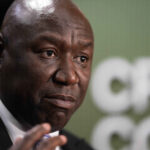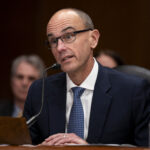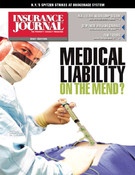Service Providers at Risk
As the United States, Europe, Japan and other developed countries turn from industrial-based to service-based economies, more and more people are engaged in providing services, and the more they provide, the more mistakes they make.
Historically only those engaged in the “learned professions”—doctors, lawyers, accountants, architects, engineers—were considered at risk from claims that they committed an error in the exercise of their profession, commonly lumped together as “malpractice.” These were the “experts” people relied on, but reliance on experts has grown exponentially, as have their numbers. It’s the key that has opened the door to greatly expanded areas of civil liability.
The rapid growth of the Professional Liability Underwriting Society (PLUS), whose 17th annual convention takes place in San Diego from Nov. 3-5, attests to it. The field is now so broad that it has essentially divided into four separate sectors: medical malpractice; directors and officers liability (D&O); employers liability, which has spawned employment practices liability insurance (EPLI) and the remainder for the moment as errors and omissions (E&O).
When individuals built their own houses, or did their own books, any errors were also theirs. Statutory and case law mandating professional requirements and protecting the public was minimal. That began to change a long time ago. In a complex society, everybody relies increasingly on a growing number of service providers.
“Regardless of what kind of business you own, customers can claim that something you did on their behalf was done incorrectly, and that this error cost them money or caused them harm in some way,” is how The Hartford defines the problem on its Web site.
“In the litigious world we live in today,” it continues, “many business owners protect themselves with E&O insurance. This type of insurance may be appropriate for anyone who gives advice, makes educated recommendations, designs solutions or represents the needs of others, such as teachers, consultants, software developers, ad copywriters, Web page designers, placement services, telecommunication carriers or inspectors.” They should also include insurance agents and brokers.
In fact, almost any service provider is at risk of being sued for making an error. At least most of those at risk can acquire coverage to provide a defense against lawsuits and to eventually pay damages. Some others, however, aren’t so fortunate.
Public companies have the highest profile, and consequently run the greatest risks. The Enron, Tyco, WorldCom, etc., scandals, and most recently Parmalat, have raised the stakes enormously, not only for the companies themselves, but also for those who serve on their boards and conduct their business. For directors and officers the cost of insurance coverage has skyrocketed.
“[The cost of] D&O coverage has been driven by the loss experience more than any other factor,” said David J. Price, executive vice president and chief underwriting officer of Burns & Wilcox Ltd. “The market continues to be fairly tight, and there are more and more exclusions.”
D&O liabilities are only one peril companies face. “Some areas have evolved to the point that fiduciary liability is being imposed,” said Jonathan P. Brown, director of Burns & Wilcox Special Risk Division, International. “Look at what happened to IBM,” he continued, referring to the judgment rendered against the company last February that it owed compensation to roughly 140,000 current and former workers who lost out when IBM converted to a cash-balance pension plan in 1999. Judge G. Patrick Murphy had previously found that the change in benefit provisions discriminated against older workers under federal pension rules. IBM is still appealing the case, but has acknowledged that it could cost as much as $6 billion.
“As a result of cases like this, we’re seeing EPLI and fiduciary responsibility breaking up into subcategories,” Brown continued. “It now depends on how big you are and where you are.” He added that while larger companies used to be able to negotiate cheaper rates, this was becoming more difficult.
Insurance agents and brokers also have problems. Last year’s PLUS Conference in Philadelphia featured a discussion by a panel of experts led by Peter Biging, a lawyer specializing in agent/broker cases. They sounded a warning about the potential E&O liabilities agents face. Biging indicated that, for a number of reasons, it’s no longer enough for an agent or broker to simply exercise “reasonable care and skill” in placing coverage. They are increasingly seen as advisors to their clients, rather than simple intermediaries. In doing so, they cross the line to take on fiduciary responsibilities, frequently without even being aware of it.
Here are some examples Biging listed that push agents and brokers over that line, and have resulted in judgments of liability for E&O:
If they charge a premium for “extra services.” If they give advice on coverage issues. If they represent themselves as “highly skilled experts.” If they assume “broad discretion” in placing coverage. If there’s been a “course of dealing over an established period of time” that has created a “special relationship” between the agent or broker and the client.
The situation hasn’t changed in a year. “Insurance agents’ E&O is quite tight,” Price said. “While the level of professionalism has increased, so has the standard of responsibility.” He also pointed out that it’s increasingly common for carriers to file lawsuits against agents for the losses they may have incurred as a result of “misrepresentations in the original application.” Companies are seeking to mitigate some losses by going after the agent (and their E&O carrier) in cases where they claim the agent had no authority to write a particular type of coverage.
Both Price and Brown emphasized that Burns & Wilcox requires any agents the company deals with to have written authority for any coverage they write. They back it up by requiring that copies of any contracts involving binding authorities be submitted to B&W for review and approval. No submission, or the failure to approve a submitted document, means no coverage.
“We must have oversight,” Price stressed. “We must see and approve any contracts.” Brown mentioned that many agents face problems in their authorizations “as a result of the upswing in surplus lines.” This is partially from inexperience. “They may assume that since they’ve dealt with one market [admitted carriers], they have the authority, but frequently that’s not the case.”
For all their time-saving efficiencies, computers and the Internet have also spawned a whole new set of potential liabilities; they present a virtually unexplored continent when it comes to professional risks. Michael A. Rossi, president of the Insurance Law Group in Glendale, Calif., in a three-part article on the perils of information technology (IT), available on the Insurance Risk Management Web Site, described two emerging areas.
“First-party policies,” which commonly cover “lost income and extra expenses because of the ‘crash’ of the insured’s computer system or Web site(s), the denial of access to the insured’s Web site(s) or computer system, or other type of loss of computer data, software, and programs (whether caused by an employee or third person).” They may also cover extortion risks relating to the insured’s computer system and Web site(s).”
“Third party coverage,” which protects against “claims for injury or damage because of a wrongful act, error, or omission in regard to professional services, the spread of a computer virus, the infringement of some form of intellectual property right, the invasion or infringement of right of privacy or publicity, and defamatory conduct.”
“There’s still a lack of understanding concerning what the risks in IT actually are,” Brown said. As the field expands rapidly, so do the risks. Classic “umbrella policies” may no longer be sufficient to guarantee coverage in such an environment. As both Price and Brown noted “there are more and more exclusions applicable to IT. Although there may be coverage, it may not be applicable to the areas where it’s needed.” Carriers—notably Chubb and some Lloyd’s syndicates—as well as wholesale brokers like Burns & Wilcox are working on getting policies to more accurately address some of the risks, but it will take time before companies can buy IT coverage as easily as other types of E&O coverage.
In some areas—notably medical malpractice and the accounting profession—that’s even getting hard to come by, which presents society with a real problem. Doctors are necessary to treat disease. Accountants are no less necessary. They do more than keep the books; they’re also increasingly charged with responsibility/liability for what “the books” say. Sarbanes-Oxley is only the latest addition to the regulations public companies face, which in turn increases their dependence on the accuracy of their accountants and auditors. “What happens if they have to go out of business?” said Penni Fromm, a former auditor, who now teaches accountants how to present their work for a number of financial institutions.
The fall of Arthur Andersen after the Enron debacle has raised questions as to whether The “Big 4” can survive. “They were the Cadillac of the industry,” Fromm said. “When they went, we all realized everybody else could too.” Not only do the “Big 4” have insufficient E&O coverage, it’s impossible for them to get enough.
The Parmalat collapse is a case in point. Italian prosecutors have been pushing the case toward trial at what amounts to light speed for the Italian justice system. The Bank of America, Deloitte and Touche and the Italian branch of the U.K. accounting firm Grant Thornton are among the possible defendants. All of the potential plaintiffs in civil actions, including Bank of America, assign blame not only to Parmalat’s scheming management, but also to the two accounting firms, who were charged with overseeing them. The liabilities could well amount to more than $10 billion. No E&O coverage goes anywhere near that high.
“You need to limit accountants’ liability,” said Brown, citing the efforts that have been made to insulate doctors and keep their insurance costs down. A doctor, however, only has to worry about one patient; an accounting firm may be held responsible for the losses of tens of thousands of investors, as recent class action lawsuits attest. That makes any solution very difficult to achieve.
Organizations such as PLUS are dedicated to upgrading the understanding and ability of brokers and agents to deal with the ever-expanding field of professional liabilities. It is a difficult task, as much of the area involves lawyers and legal decisions, which can change the rules rapidly. What might have been adequate coverage last week could be insufficient tomorrow. In order to keep up with developments agents and brokers must keep constantly informed of developments, not only to protect their clients, but also themselves.
Topics Agencies
Was this article valuable?
Here are more articles you may enjoy.


 Chubb, The Hartford, Liberty and Travelers Team Up on Surety Tech Launch
Chubb, The Hartford, Liberty and Travelers Team Up on Surety Tech Launch  Florida Jury Returns $779M Verdict for Family of Security Guard Killed at Gambling Cafe
Florida Jury Returns $779M Verdict for Family of Security Guard Killed at Gambling Cafe  McKinsey Plots Thousands of Job Cuts in Slowdown for Consulting Industry
McKinsey Plots Thousands of Job Cuts in Slowdown for Consulting Industry  Pierce Named CEO of GEICO as Combs Resigns
Pierce Named CEO of GEICO as Combs Resigns 


